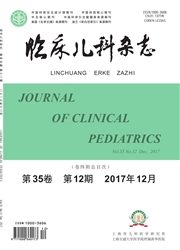

 中文摘要:
中文摘要:
目的:展现中国近五年新生儿无创辅助通气领域的研究情况,描绘该领域的研究趋势,提供未来研究的可能方向。方法采用共词分析法,于2015年4月以自由词“新生儿”及“无创通气”在CNKI数据库进行文献检索及筛选,命中文献457篇,通过Excel 2010建立高频关键词共现矩阵,使用Ucinet 6.3绘制可视化网络。结果中国新生儿无创辅助通气支持方式主要使用经鼻持续气道正压通气治疗新生儿呼吸窘迫综合征;经鼻间歇正压通气及双水平正压通气也逐步应用于临床,各种无创辅助通气技术的应用范围在逐步扩大。除新生儿科医师外,护理工作者也对无创辅助通气技术的效果及实施给予了密切关注。结论该研究初步建立了中国新生儿无创辅助通气的可视化网络,反映近年来该研究领域的热点及现状。
 英文摘要:
英文摘要:
ObjectivesTo present the current condition of non-invasive ventilation in newborns in the last ifve years in China, to describe the probable research trends of this ifeld, and to provide the possible research directions in future.Methods Using co-word analysis, the keywords “neonate” and “non-invasive ventilation” were searched in the CNKI database. The search results included 457 articles. Then the relation matrix was built by Excel 2010. Finally the visualized network was drawn by Ucinet 6.3.ResultsNasal continuous positive airway pressure (nCPAP) is primarily for the treatment of neonatal respiratory distress syndrome (NRDS) in China. Meanwhile, nasal intermittent positive pressure ventilation (nIPPV) and bilevel positive airway pressure (BiPAP) are gradually applied in clinic. The application scope of non-invasive ventilation is expanding. Besides the neonatologists, nurses are also paying close attention to non-invasive ventilation.ConclusionsThe visualized network, successfully built by Netdraw, relfects the hot topics and current condition in this ifeld.
 同期刊论文项目
同期刊论文项目
 同项目期刊论文
同项目期刊论文
 期刊信息
期刊信息
